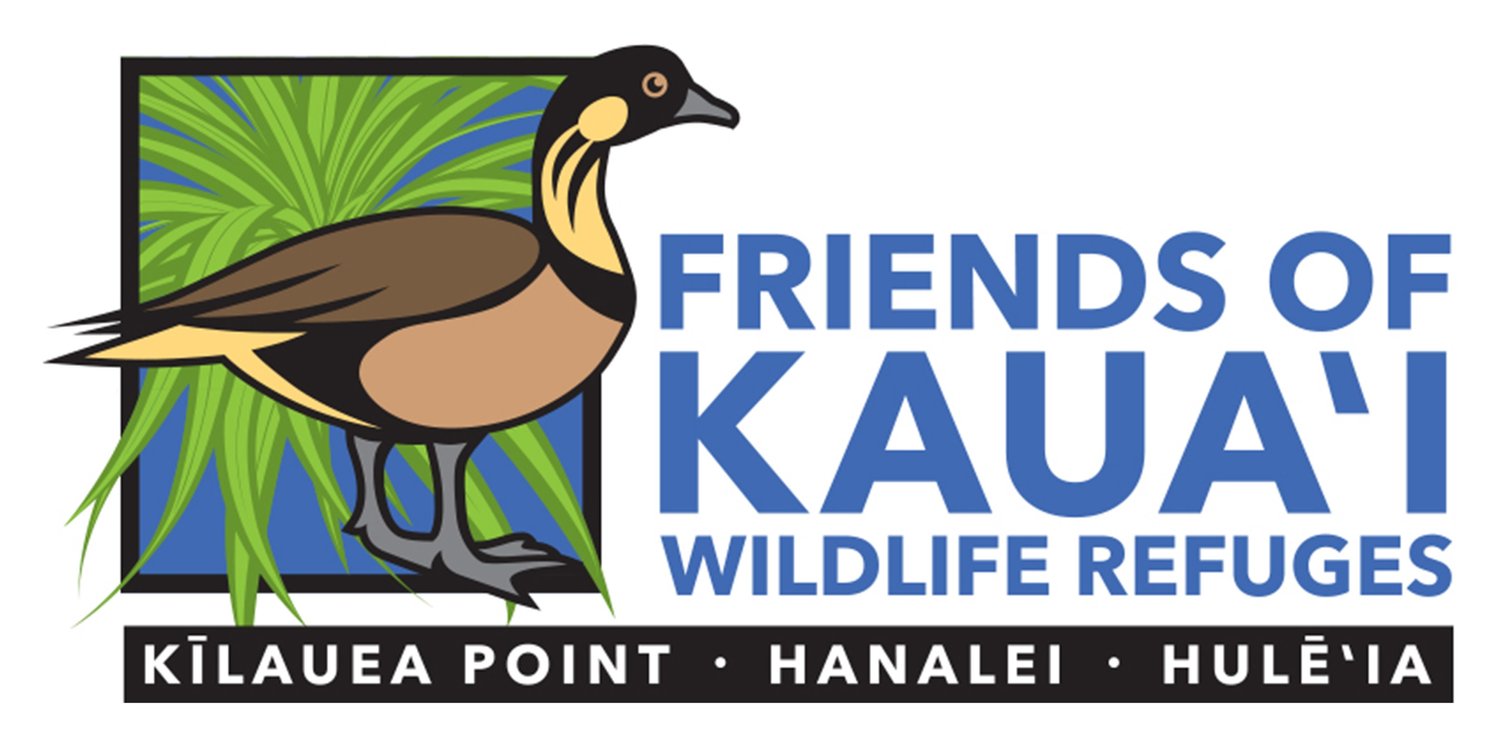Wildlife Spotlight: ʻuaʻu kani
They’re baaaack! Each year around mid-March ʻuaʻu kani, or wedge-tailed shearwaters, return to Kīlauea Point NWR and other coastal areas around the Island of Kauaʻi. They fly here from waters near the Gulf of Panama to nest in burrows and under rocks or vegetation as pairs seek to raise a single chick. It is a thrilling chapter to observe, as couples reunite, new couplings develop, and burrows are rehabilitated.
ʻUaʻu kani are the largest of the tropical shearwaters and feature grey-brown plumage on the back, head and upper wing and white plumage below. They are named for their wedge-shaped tail, which may help them to glide in the air. They have pink legs that are set far back on their body as an adaptation for adept swimming, but which also cause them to appear a bit awkward while moving about on land. ʻUaʻu kani feed predominantly on fish, squid and crustaceans and can dive up to an impressive 46 feet as they fish.
At the age of four, after having spent these developmental years exclusively at sea, ʻuaʻu kani will be ready to mate and will return to the same colony site where they were raised. After forming pair ponds, they then exhibit largely monogamous behavior and will generally continue to reunite with the same mate for several years. Pairs from previous nesting seasons will reconnect at the same burrow from the previous year after spending time alone at sea, and occasional turf wars develop as new birds that are ready to mate arrive and look for space.
After mating, in June the female will lay a single egg. If that egg fails, like most other seabirds, the season will be over for them, and they will return to sea. However, if successful, both parents will take turns incubating their egg. The male usually undertakes the first incubation period while the female replenishes her energy by feeding at sea. Then both parents will take turns incubating their egg in stretches that can last up to 13 days. Total incubation takes around 50 days, and the chicks will hatch in August.
After hatching, the chick is brooded for up to 6 days, until it can regulate its own body temperature. Then it will be left alone in the nest site while both parents take turns hunting for food and feeding the chick. ʻUaʻu kani chicks are initially fed with stomach oil, an energy-rich, waxy oil of digested prey created in the parent's gut and will later “graduate” to solid portions of fish.
ʻUaʻu kani are crepuscular, which means that they are active primarily during the twilight period. They have a very distinctive cry, which gives them their name meaning “moaning petrel.” Click HERE to enjoy a clip of their vocalizations in the bushes of Kīlauea Point NWR.
ʻUaʻu kani, like other ground nesting seabirds, are extremely vulnerable to predation from free roaming cats and dogs. They evolved here without any land-based predators and have no defenses to protect themselves if attacked. Please help our native seabirds by keeping dogs on a leash, especially when hiking or camping along the coast, keeping cats indoors, not feeding feral cats (which tends to make them an even more effective predator, rather than eliminating the instinct to hunt) and by being very mindful when hiking in coastal areas.
We invite you to visit us in the twilight hours at the Kīlauea Point NWR Overlook, located at the end of Kīlauea Road, to enjoying seeing ʻuaʻu kani zip back to their burrows from sea and hearing their haunting calls echo across the Refuge.
Photo Credit: Hob Osterlund, Gene McGuire


